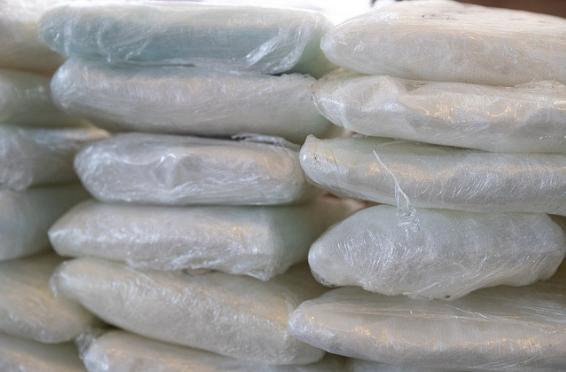As the opioid crisis, and the associated rates of overdoses and overdose deaths, continues to rise throughout America, the concern over the last couple of years has shifted away from prescription pain medications such as OxyContin and illicit substances like heroin to more potent and dangerous substances: Synthetic opioids, and more specifically the synthetic opioid Fentanyl. Synthetic opioids like fentanyl are now the most common drugs involved in overdoses and overdose deaths in the United States. In 2017, 59% of opioid-related deaths in America involved fentanyl. This number has dramatically increased from 2010, when statistics reported that only 14.3% of opioid-related overdose deaths involved fentanyl.
So, what is fentanyl, what makes it so dangerous, and how much of the current opioid epidemic in the United States can be blamed on this synthetic opioid?
Fentanyl is a synthetic pharmaceutical opioid that is 80-100 times stronger than morphine. It is a pain reliever that was developed and is approved in medicine for treating severe pain, typically in the pain management treatment of late stage cancer patients. More recently, it has been used to treat patients in severe pain post-surgery and patients that suffer from chronic pain. It can cause tolerance and addiction, as with most opioids over time the individual using fentanyl will need higher and higher doses to achieve the desired pain-relieving effect. When legally prescribed by a doctor, fentanyl can be prescribed as a shot, a patch on a patient’s skin, or as lozenges that offer a delivery system similar to cough drops.
However, more recently, illegal fentanyl has begun to be produced both domestically and overseas in laboratory environments. This synthetic fentanyl most often is created in powder form and sometimes pressed into pill form to mimic legally prescribed drugs such as opioids and benzodiazepines. On the street, fentanyl is often added to illicit drugs such as heroin, cocaine, methamphetamine and even marijuana. Individuals purchasing these illicit substances do not know they are purchasing drugs that include fentanyl or, in the case of heroin, may be all fentanyl, which can often result in the potency of the drug causing drug overdoses or overdose death. Because only a very small bit of fentanyl can cause overdose, buyers of illicit substances have no way of knowing how much fentanyl is contained in the products they are buying or how much to “safely” use. Therefore, it is quite easy to overdose on a street drug that is pure fentanyl or contains any amount of the product.
Fentanyl and other similar synthetic opioids are responsible for the worst drug epidemic in the history of the United States. Due to the potency of fentanyl, overdose deaths keep rising throughout the country. According to the latest figures, fentanyl and similar synthetic opioids are to blame for the deaths of over 67,000 Americans. It only takes about 2 milligrams of fentanyl to overdose and many street drugs contain more than 2 milligrams. Fentanyl is cheap to make and adding it to street drugs like heroin can increase the potency exponentially and add “kick” to a weak batch of street heroin. This makes the product more profitable for drug dealers and organizations that operate in the illicit drug trade. Some drug dealers and now selling straight fentanyl as a product, and many individuals suffering from substance use disorder and addiction look to purchase straight fentanyl for use. All these variables have made using illicit drugs even more dangerous than it has been in the past, heavily contributed to the rates of overdose (not simply overdose deaths but regular overdoses of users and made the role of stemming the tide of addiction and overdoses that much harder for those working in the treatment, harm reduction, and law enforcement fields.
Due to these issues, the availability of and the access to naloxone has drastically increased nationwide. Naloxone, the overdose reversal drug, is being carried by many police officers, firefighters, paramedics, and other first responders, as well as treatment providers and many individuals in the community. Naloxone is available through many pharmacies, is available in 46 states without a prescription and many states have offered a standing order for anyone to acquire the medication that needs it. Understanding the high risk of overdose on just a single relapse, many addiction treatment providers have begun to utilize the evidence-based practice of medication-assisted treatment approaches that dove tail into a harm reduction public health approach and can work extremely well with other evidence-based therapeutic approaches to stabilize an individual and aid them into long-term recovery.
The number of fentanyl-related issues resulting in addiction and overdoses is not slowing down throughout the country. While we seem to begin to be making headway in turning the tide of the prescription pill crisis, this synthetic opioid crisis has moved in to take its place. For anyone that may be suffering from opioid use disorder issues or have a family member or loved one dealing with issues related to fentanyl, it’s important to act early and begin to engage them in a clinically-appropriate treatment program.
If you or someone you know needs help for addiction or dual diagnosis issues, please give us a call. Maryland Addiction Recovery Center offers the most comprehensive dual diagnosis addiction treatment in the Mid-Atlantic area. If we aren’t the best fit for you or your loved one, we will take the necessary time to work with you to find a treatment center or provider that better fits your needs. Please give us a call at (410) 773-0500 or email our team at info@marylandaddictionrecovery.com. For more information on all of our drug addiction, alcohol addiction and co-occurring disorder services and recovery resources, please visit our web site at www.marylandaddictionrecovery.com.
